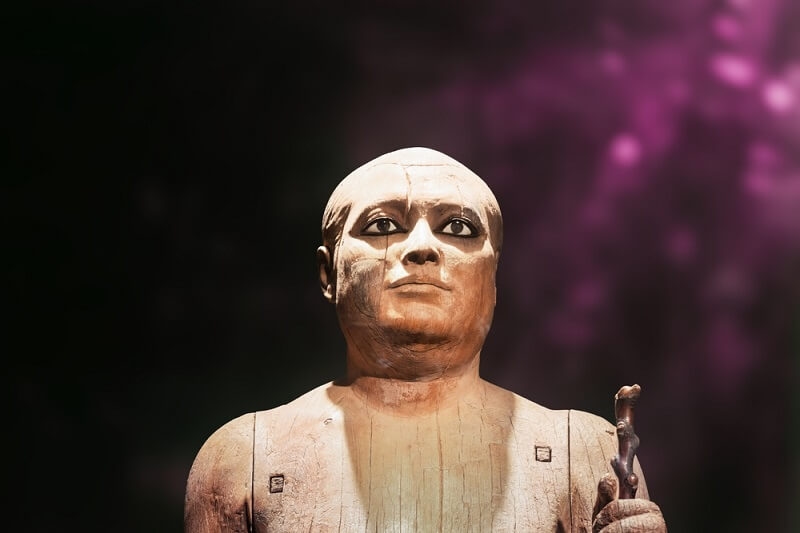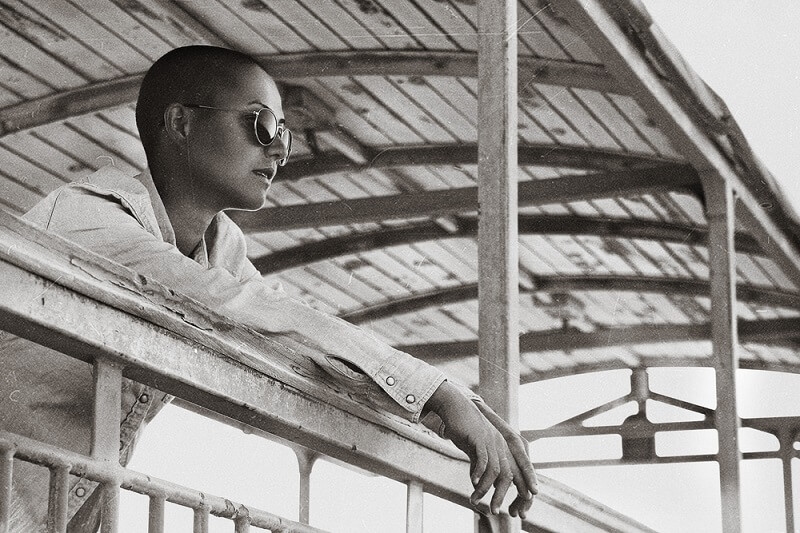
The ancient Egyptian civilization is so known for its architectural miracles, spiritual activities, and aesthetic beauty, yet the society was unique with many of its peculiar traditions. One such custom, where a man shaved his head, stands as an exercise with different connotations in terms of functionality, spiritual practice, and socialization. Ancient Egyptian shaved heads meant more than just a hairstyle, they represented devotion, social roles, and an innovative way of dealing with the challenges of their environment. This is where exploring ancient grooming habits, hair symbolism, and historical styles opens up the deep meaning of this ancient practice.
The scorching sun of Egypt and the constant threat of lice made shaved heads a practical solution to hygiene and comfort. In a society where cleanliness was a purity, especially considering the climate, removing hair from the scalp provided a practical way to stay cool and avoid infestations. It was not just a convenience, shaving became part of the daily routine of many Egyptians and merely formed a basis for many other cultural practices, such as the wearing of wigs.
Wigs therefore came in as solutions to functionality and also for fashion purposes. While a shaved head alleviated the individual from the ravages of extreme weather, the use of human hair, plant fiber, or wool wigs during outdoor pastime ensured an adequate covering up against the sunlight.
Hair was not mere anatomy for the citizens of Ancient Egypt but had deep levels of symbolism. Shaving one's head was apparently a style of purification, humility, and being committed to societal norms or spiritual ideals. The priests who served the gods would also shave their heads and bodies as a visible attribute of being spiritually ready, clean, and in a pure state where they were meant to perform their sacred duties without interference.
Hair had a specific meaning for children, often representing rites of passage. The "sidelock of youth" is a particular style in which only one lock of hair is left, which symbolizes the child's protected status and bond to childhood gods. Once one became an adult, the sidelock was taken away to initiate maturity and a new place in society.

Shaved heads were a key component of the Ancient Egyptian style. They were also used to explore different styles in the form of wigs. The wigs varied from simple designs for the commoners to very ornate designs for the elite. Wigs of officials and nobles were styled in the most complex designs and were perfumed to infuse or even studded with gold and beads, representing richness and power.
Even ordinary citizens adopted this trend in more primitive forms, wearing wigs as a means of self-expression and conformity to the general cultural beauty. The contrast between shaved heads and wigs highlighted the ingenuity of the Egyptians in reconciling functionality with artistic expression, enabling them to change their appearance easily according to social or ceremonial needs.
In a deeply religious society, grooming practices would often have a spiritual connotation. For the priests and attendants of temples, shaving off one's hair was an act of consecration with ritual purity undertones. Hair was considered something that caused defilement; hence, to be completely void of it to conform to what the gods found clean and tidy was necessary.
This ritual of shaving was most often performed in combination with other purification rituals, such as a holy water bath or certain garment usage. What was remarkable, then, was the great attention to detail these rituals commanded from the Egyptians, with the sense that physical and spiritual purity were interconnected. To the Egyptians, not only was a shaved head a physical condition but also a powerful spiritual declaration.
The shaving instruments of Ancient Egypt reveal the technological advancement of those times. Their razors first came in the form of copper and later developed into bronze forms, showing an ability to shape their tools according to the utmost efficiency and accuracy. Ornamented razors indicate that shaving was considered a practical profession as well as a respectable skill.
Barbering was something respectable, and men received barbershop services in the streets. Shaving parlors often transformed into social spots as individuals went there to be squeaky clean, listen to the news, and perform other issues that were happening in society.
However, the services rendered by the barber were not only grooming but also involved much more as they had a social flavor to them.
Shaved heads are an essential part of Ancient Egyptian art and iconography. Many wall paintings, statues, and carvings show people who have clean-shaven heads but wear elaborate wigs or ceremonial headdresses. These were not random depictions but rather symbolic representations of the roles played by individuals in society, spiritual purity, or a fashion statement.
For instance, pharaohs were often shown with shaven heads under their crowns, signifying their divine relationship and preparedness to lead. Similarly, the images of priests and priestesses with shaven scalps depict their devotion and ritualistic roles, which emphasizes the cultural weight of this practice in everyday life and ceremonial contexts.
Hair removal was an absolute custom among Ancient Egyptians. The procedure was undertaken by both sexes, with varying motives. In general, women shave their heads due to convenience in hot climatic conditions but at the same time adopt fashions as they used to adorn themselves with wigs with complicated designs or even colors. This wig was thus used for them to attain beauty as culturally expected but could keep a clean, bald scalp.
The male wore the shaved head as a mark of status or professional class and was normally associated with particular wigs for his position in society. This fashion flexibility for wigs enabled both men and women to have personal styles within societal restrictions.
Beyond daily life, shaving one's head was meaningful in rituals for mourning and transformation. In certain cases, the act of shaving one's head was a symbol of grief: it represented their loss and withdrawal from worldly activities. It is both personal and communal, symbolizing the magnitude of emotion as well as showing respect for the deceased.
Shaving was further associated with other transitional rituals for instance rites during significant changes of life. Cutting off hair enabled the Egyptians to symbolically peel off old roles or spiritual characters and take up new ones. This aspect signifies the deeper symbolism attached to an apparently simple task like shaving.
Ancient Egyptian shaved head culture is another witness to the craft and spiritualism coupled with the complexity of the structure of society. What seems at first a straightforward attempt by the people to deal with environmental imperfections reveals, upon closer inspection, a rich tapestry of symbolism, ritual, and artistic expression. From the spiritual purity required by religious roles to the fashion statements created through elaborate wigs, shaving one's head went beyond mere grooming and became a defining feature of cultural identity.
As we delve deeper into the tools, techniques, and traditions involved in this practice, we begin to appreciate better the multifaceted ways by which Ancient Egyptians had navigated their world. Hairless heads effectively became a canvas upon which self-expression was carved, their mark as a testament to the roles that society offered, and a verification of their strong commitment to cleanliness as well as spiritual harmony. This long-standing tradition hints at the kind of civilization that could use even ordinary practices like washing to convey core beliefs and values, giving us a heritage that continues to captivate and inspire.
This content was created by AI